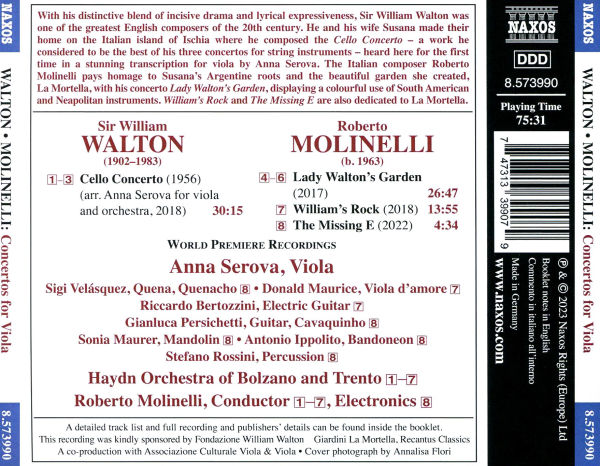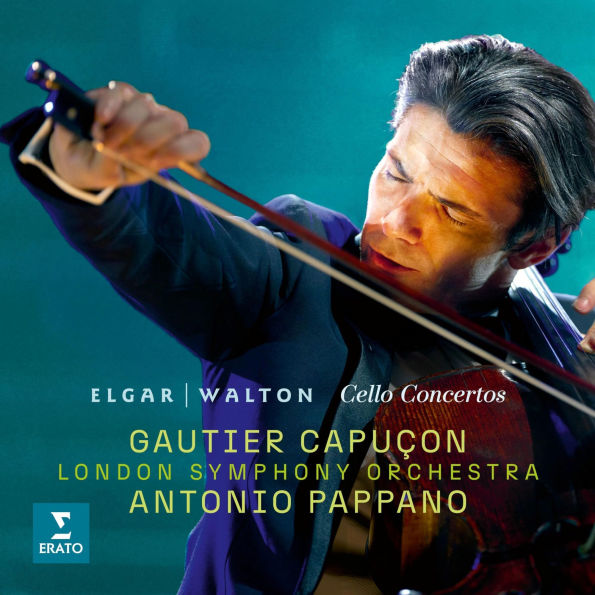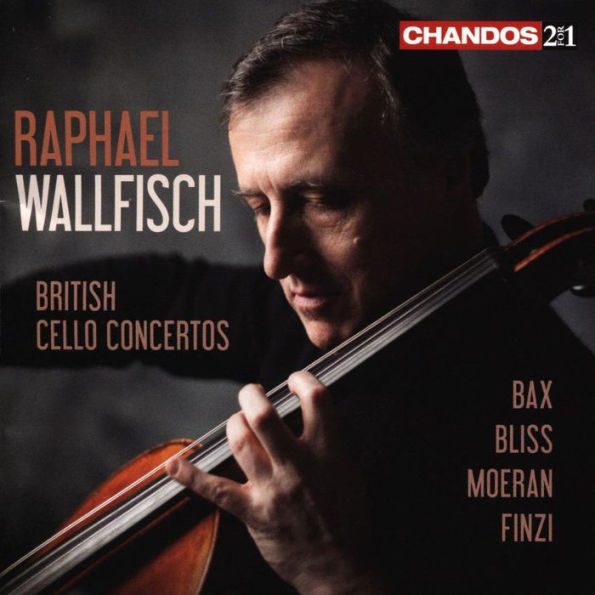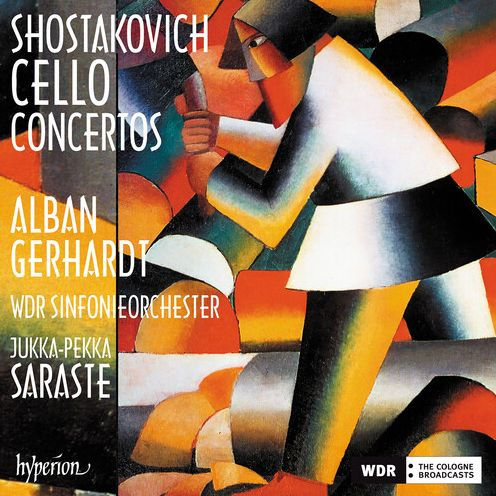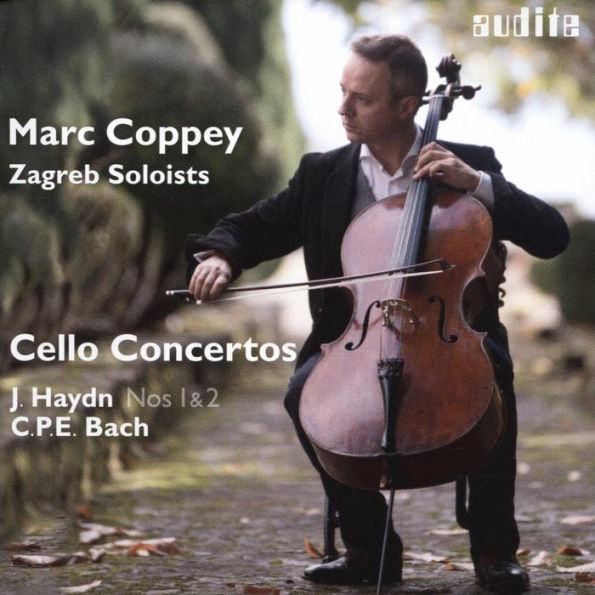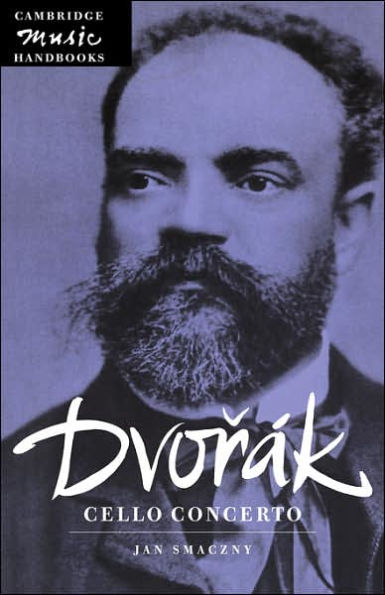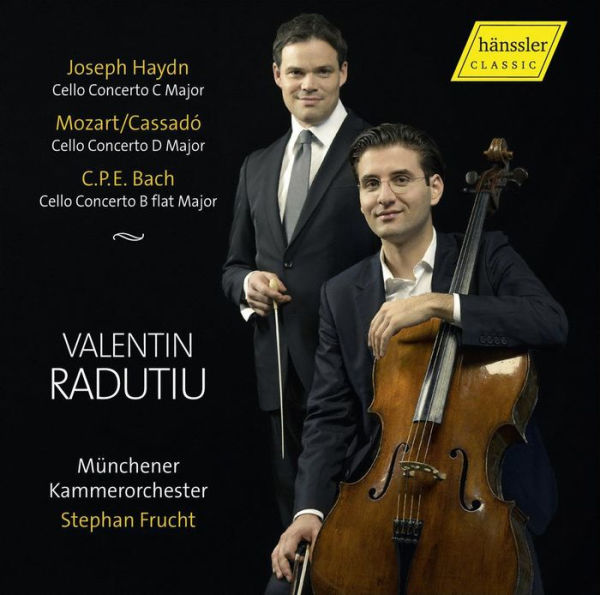Home
Walton: Cello Concerto (arr. For Viola); Molinelli: Viola Concerto 'Lady Walton's Garden'
Barnes and Noble
Loading Inventory...
Walton: Cello Concerto (arr. For Viola); Molinelli: Viola Concerto 'Lady Walton's Garden' in Bloomington, MN
Current price: $21.99

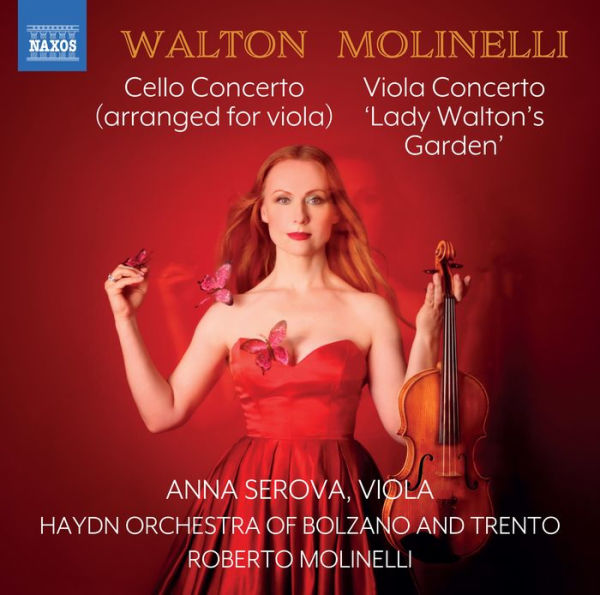
Walton: Cello Concerto (arr. For Viola); Molinelli: Viola Concerto 'Lady Walton's Garden' in Bloomington, MN
Current price: $21.99
Loading Inventory...
Size: OS
With a viola transcription of
William Walton
's
Cello Concerto
as the main event, played by the little-known
Haydn Orchestra of Bolzano and Trento
, this might seem a release of the most interest to
Walton
specialists, but in fact, it is highly listenable for anyone. The
concerto transcription is by violist
Anna Serova
herself, and it is quite an artful thing, never departing drastically from the original but carefully controlling the registral balances; the lack of the cello's low notes is compensated for by a variety of timbres in the middle, and the cadenzas in the finale are confidently handled. It is a piece of work that may well attract other violists seeking to expand their sparse concerto repertory. The real unexpected treat here, however, comes with the rest of the works on the album, composed by conductor
Roberto Molinelli
(who is also a violist and highlights the viola nicely throughout). All feature a solo viola, and all pertain to
's wife,
Susana
, and a garden she created on the Italian island of Ischia.
Lady Walton's Garden
is a full-fledged three-movement viola concerto depicting various plants from the garden; the "Palo borracho" finale, with its tango evoking an Argentine plant (
was from Argentina), is a rousing piece. The two short pieces at the end are perhaps even better;
William's Rock
is a rock-influenced work with electric guitar suggested by a boundary rock on the property, and
The Missing E
is inspired by a monument with an inscription missing the letter E. The piece avoids the note E until the very end when it appears in a bird call played on the quena, a South American flute. This program is exceptionally well integrated in several satisfying ways, and the performances are all top-notch. Of interest to Waltonians, certainly to violists, and really to anyone looking to enjoy or program an evening of 20th century music. ~ James Manheim
William Walton
's
Cello Concerto
as the main event, played by the little-known
Haydn Orchestra of Bolzano and Trento
, this might seem a release of the most interest to
Walton
specialists, but in fact, it is highly listenable for anyone. The
concerto transcription is by violist
Anna Serova
herself, and it is quite an artful thing, never departing drastically from the original but carefully controlling the registral balances; the lack of the cello's low notes is compensated for by a variety of timbres in the middle, and the cadenzas in the finale are confidently handled. It is a piece of work that may well attract other violists seeking to expand their sparse concerto repertory. The real unexpected treat here, however, comes with the rest of the works on the album, composed by conductor
Roberto Molinelli
(who is also a violist and highlights the viola nicely throughout). All feature a solo viola, and all pertain to
's wife,
Susana
, and a garden she created on the Italian island of Ischia.
Lady Walton's Garden
is a full-fledged three-movement viola concerto depicting various plants from the garden; the "Palo borracho" finale, with its tango evoking an Argentine plant (
was from Argentina), is a rousing piece. The two short pieces at the end are perhaps even better;
William's Rock
is a rock-influenced work with electric guitar suggested by a boundary rock on the property, and
The Missing E
is inspired by a monument with an inscription missing the letter E. The piece avoids the note E until the very end when it appears in a bird call played on the quena, a South American flute. This program is exceptionally well integrated in several satisfying ways, and the performances are all top-notch. Of interest to Waltonians, certainly to violists, and really to anyone looking to enjoy or program an evening of 20th century music. ~ James Manheim
With a viola transcription of
William Walton
's
Cello Concerto
as the main event, played by the little-known
Haydn Orchestra of Bolzano and Trento
, this might seem a release of the most interest to
Walton
specialists, but in fact, it is highly listenable for anyone. The
concerto transcription is by violist
Anna Serova
herself, and it is quite an artful thing, never departing drastically from the original but carefully controlling the registral balances; the lack of the cello's low notes is compensated for by a variety of timbres in the middle, and the cadenzas in the finale are confidently handled. It is a piece of work that may well attract other violists seeking to expand their sparse concerto repertory. The real unexpected treat here, however, comes with the rest of the works on the album, composed by conductor
Roberto Molinelli
(who is also a violist and highlights the viola nicely throughout). All feature a solo viola, and all pertain to
's wife,
Susana
, and a garden she created on the Italian island of Ischia.
Lady Walton's Garden
is a full-fledged three-movement viola concerto depicting various plants from the garden; the "Palo borracho" finale, with its tango evoking an Argentine plant (
was from Argentina), is a rousing piece. The two short pieces at the end are perhaps even better;
William's Rock
is a rock-influenced work with electric guitar suggested by a boundary rock on the property, and
The Missing E
is inspired by a monument with an inscription missing the letter E. The piece avoids the note E until the very end when it appears in a bird call played on the quena, a South American flute. This program is exceptionally well integrated in several satisfying ways, and the performances are all top-notch. Of interest to Waltonians, certainly to violists, and really to anyone looking to enjoy or program an evening of 20th century music. ~ James Manheim
William Walton
's
Cello Concerto
as the main event, played by the little-known
Haydn Orchestra of Bolzano and Trento
, this might seem a release of the most interest to
Walton
specialists, but in fact, it is highly listenable for anyone. The
concerto transcription is by violist
Anna Serova
herself, and it is quite an artful thing, never departing drastically from the original but carefully controlling the registral balances; the lack of the cello's low notes is compensated for by a variety of timbres in the middle, and the cadenzas in the finale are confidently handled. It is a piece of work that may well attract other violists seeking to expand their sparse concerto repertory. The real unexpected treat here, however, comes with the rest of the works on the album, composed by conductor
Roberto Molinelli
(who is also a violist and highlights the viola nicely throughout). All feature a solo viola, and all pertain to
's wife,
Susana
, and a garden she created on the Italian island of Ischia.
Lady Walton's Garden
is a full-fledged three-movement viola concerto depicting various plants from the garden; the "Palo borracho" finale, with its tango evoking an Argentine plant (
was from Argentina), is a rousing piece. The two short pieces at the end are perhaps even better;
William's Rock
is a rock-influenced work with electric guitar suggested by a boundary rock on the property, and
The Missing E
is inspired by a monument with an inscription missing the letter E. The piece avoids the note E until the very end when it appears in a bird call played on the quena, a South American flute. This program is exceptionally well integrated in several satisfying ways, and the performances are all top-notch. Of interest to Waltonians, certainly to violists, and really to anyone looking to enjoy or program an evening of 20th century music. ~ James Manheim
